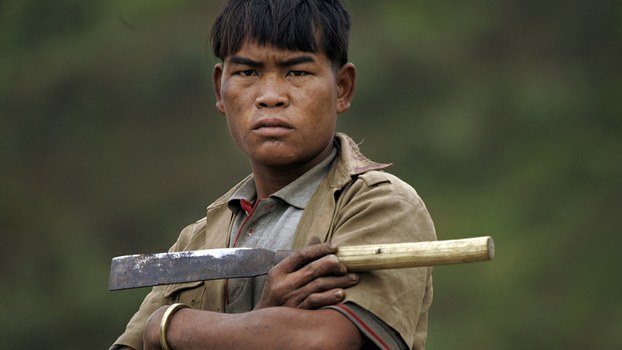Laos Set to Graduate From Least Developed Country Status by 2024
Source: RFA
For the first time since it was identified by the United Nations as one of the world’s Least Developing Countries (LDC), Laos has fulfilled the eligibility criteria to be removed from the list, and could see its status upgraded as early as 2024, according to the U.N.’s Economic and Social Council (ECOSOC).
Last month, New York-based ECOSOC’s Committee for Development Policy (CDP) announced that Laos had met two of three criteria—Gross National Income (GNI) per capita and for the Human Assets Index (HAI)—required to graduate from LDC status in its triennial assessment, held in 2018. The Economic Vulnerability Index (EVI), which measures resilience to shocks and stability, is still to be met.
The CDP said that if Laos sustains its development gains and meets the criteria again in 2021, it will be “formally removed from the list of LDCs in 2024.”
“We welcome this significant achievement by the Government which is a demonstration of the steady progress, based on the right policy choices, which has been made towards the overarching goals of the 8th National Socio-Economic Development Plan,” U.N. Resident Coordinator Kaarina Immonen said in a statement announcing the results of the CDP’s assessment.
“The United Nations remains committed to support Lao PDR in the process of graduation from LDC status and in achieving the Agenda 2030, towards a sustainable, equitable and prosperous future, leaving no one behind.”
We are offering the highest and best coverage for cars & motorbikes in Laos ! No other insurance provider in Laos offers the coverage as we do at J&C Services ! And we offer the most competitive premiums !
Life’s complicated enough. So we’ve made buying car insurance simple and fair, with all the benefits you’d expect and more. That’s car insurance the way it should be.
Try us and be surprised how much we differ if compared to other providers !
www.jclao.com / info@jclao.com / 020 77 100 200
The CDP found the GNI per capita of Laos, which was first included on the list of LDCs in 1971, had reached U.S. $1,996 in 2018, surpassing the threshold of U.S. $1,230 or more, while the HAI had reached 72.8, compared to a threshold of 66 or more. The EVI reached 33.7, close to the threshold of 32 or below.
The announcement that Laos had met its eligibility requirements follows decades of promises by the ruling Communist Party leadership that its stewardship of the economy would see the country graduate from the list by 2020.
Officials have softened the pledge of late, and in August last year, Lao vice minister of information, culture and tourism Savankhone Razmountry said his country aimed to achieve an upgrade from LDC status to a middle income country by 2030 through strengthening international economic partnerships, including the promotion of tourism.
Savankhone told Asia News Network that Laos had set a goal of graduating from LDC status “during the period from 2025 to 2030” on the back of tourism, adding that the government planned to increase the number of foreign visitors from around 4 million to “6 or 7 million in the coming years.”
Most recently, in his April 13 address to the nation marking the Lao New Year, President Bounnhang Vorachit said that in 2018 the government would “strive to alleviate poverty and ensure the nation is moving towards graduation from Least Developed Country status by 2020 and becomes an upper-middle income country by 2030.”
‘On the graduation path’
An official with the United Nations Development Programme’s (UNDP) office in Laos recently told RFA’s Lao Service that they expect Laos to pass its assessment in 2021 with flying colors.
“We expect that Laos will also reach the EVI in 2021, as there is not much of a gap anymore—of course provided there’s no shock to the country happening, like a global economic meltdown or a natural disaster,” said the official, who spoke on condition of anonymity.
“But even in case that the EVI is not reached, but the other two are, Laos still stays on the graduation path, since only two out of three criteria must be met in two consecutive triennial reviews.”
An official with a poverty reduction fund based in northern Laos welcomed news of the fulfillment of eligibility requirements, saying that graduating from the list would be “good for the country’s image,” but cautioned that underlying issues of poverty remain unaddressed.
“People are still poor and their living conditions have not improved much—in some areas of the country, during certain times of the year, people still earn less than U.S. $0.12 per month,” the official said.
The official noted that “more than 70 percent of Laotians in the country’s five northern provinces live below the poverty level,” and warned that if Laos graduates from LDC status, it will receive less financial assistance from foreign donors, “which most people still rely on.”
According to a March 2018 assessment by the World Bank, the Gross Domestic Product (GDP) in Laos grew by an average of 7.8 percent over the last decade, with the use of the country’s natural resources—mostly hydropower potential, minerals and forests—contributing around one-third of the growth.
The Bank said that Laos has halved poverty, reduced hunger, and improved education and health outcomes in recent years, but continues to lag in other key areas—most notably on child nutrition, with an estimated 44 percent of under-five children being stunted.

